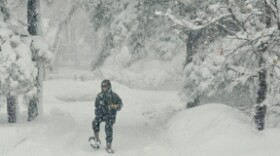The Colorado Plateau is a land of constant discovery—both above and beneath our feet. Recently a surprising soil was unearthed that fit a previously empty slot in the U.S. Department of Agriculture’s established soil classification system.
The find was made at Wupatki National Monument in northern Arizona—one of the best locations for interesting and varied types of dirt.
Jim Harrigan, soil scientist with the Natural Resources Conservation Service in Flagstaff, says what makes this soil unique is the rare combination of circumstances that led to its formation.
Tiny particles of volcanic glass eroded from rocks around the San Francisco Peaks. Those particles were washed downslope over thousands of years, forming thick alluvial deposits. The glassy pieces then welded together in the dry climate, forming soil so tough it’s called “duri-pan.”
Duri-pans are found in other places, but this one is unusually thick. Scientists had speculated such a soil should exist but it had never been seen—until this discovery four years ago.
Soil surveyors have since located examples of this durable dirt in 30 more locations—proving it’s more than a quirky one-of-a-kind. The best example was found at an abandoned trading post on Highway 89 near Wupatki.
This completely new taxonomic class of soil has been named after that trading post. The Wauneta soil is now officially recognized as one of the toughest types of dirt in the nation.








